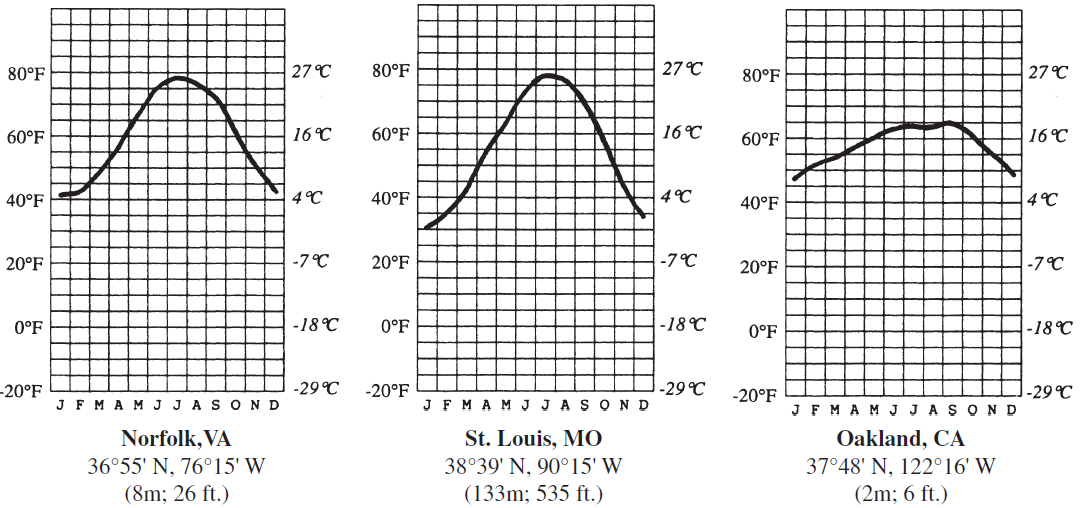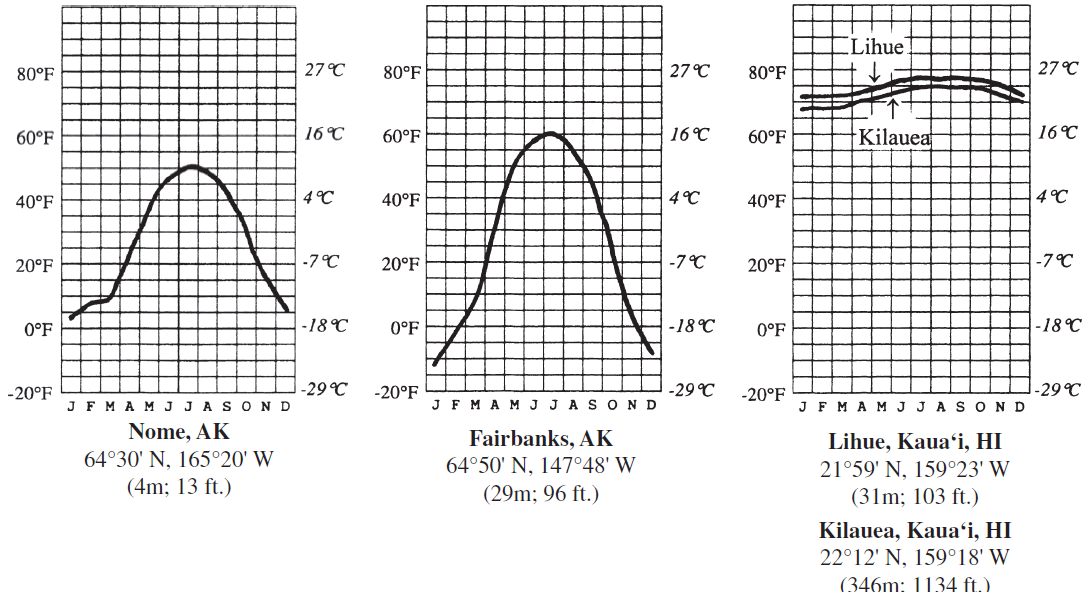What explains the difference in temperature patterns between Lihue and Kilauea?
Six charts showing the average monthly temperature (in °C and °F) for seven U.S. cities are provided (the first letter of each month of the year is shown along the bottom of the charts). For each of the cities, the latitude and longitude, as well as the elevation, are provided.


Answer the question by comparing the temperature charts. In your answers, consider the one temperature control factor that is most responsible for the patterns shown (choose from latitude, land–water contrasts, wind patterns, or altitude). You may use the same answer for more than one question. You should locate each of the cities on a world map before trying to answer the question. If altitude is the main factor cited, calculate the expected temperature difference between the two cities based on the average lapse rate.
Altitude: Kilauea is higher elevation than Lihue. Temperature difference based on
average lapse rate is about 2.0°C or 3.8°F.
You might also like to view...
Understanding science is more than memorizing that the electron has a negative charge. It involves what is called the "Process of Science." Which of the following correctly describes this? Understanding science is more than memorizing that the electron has a negative charge. It involves what is called the "Process of Science." Which of the following correctly describes this?
a. It is understanding how scientific advances are made, validated, and interpreted. b. It is being able to interpret an elected official's position on stem cell research, climate change, or space exploration. c. Understanding the process of science and scientific problem solving can help us make better decisions every day. d. All of the above responses. e. None of the above responses.
Religiosity is increasing in Europe
Indicate whether this statement is true or false.
Most earthquakes are explainable using ________.
A. plate-tectonics theory B. Maxwell's equations C. the law of superposition D. the law of lateral seisms E. the seismic-gap method
Which of the following is least associated with a cold frontal passage two hours ago?
A) An increase in temperature B) A change in wind speed C) An increase in in humidity D) An increase in stability E) A change in wind direction